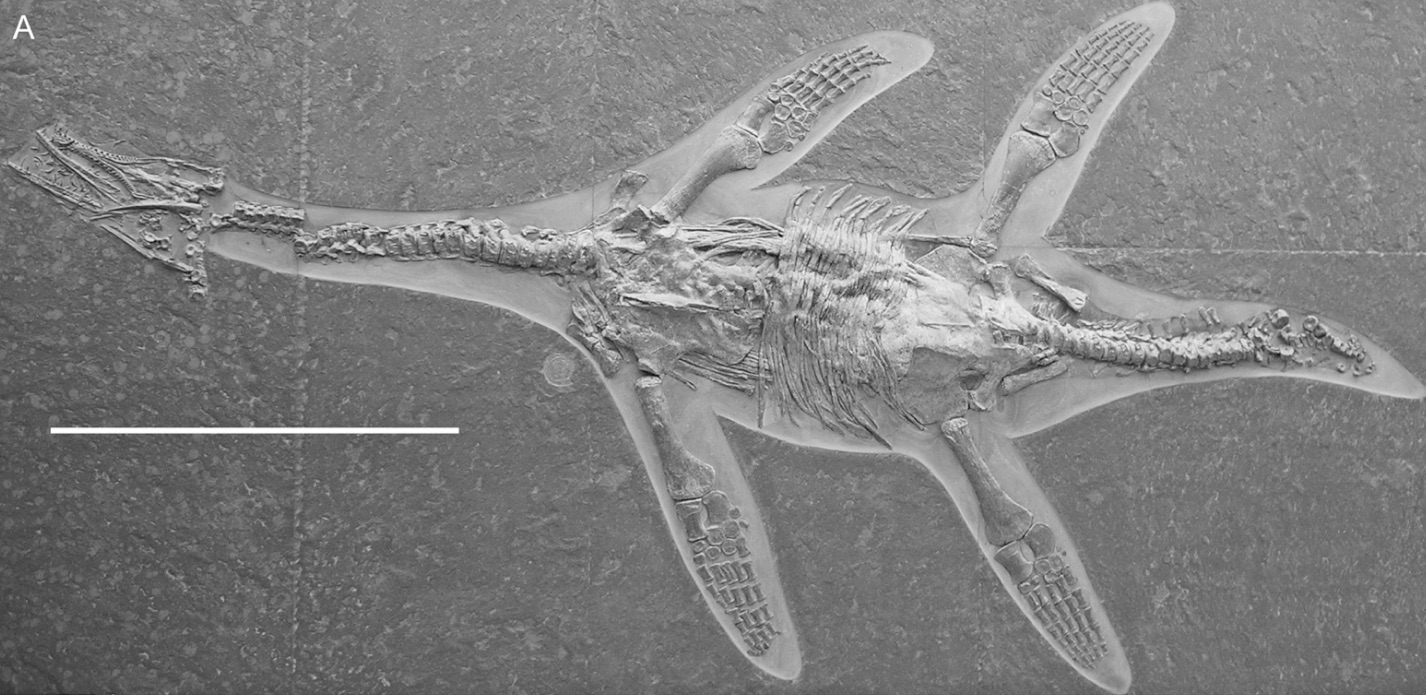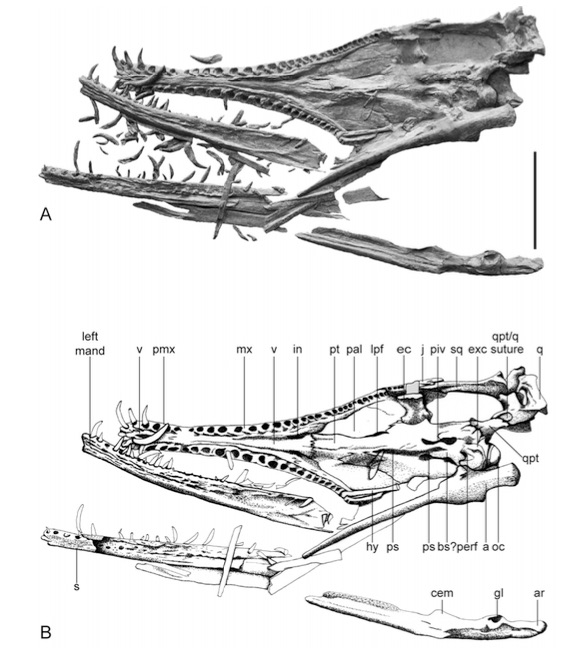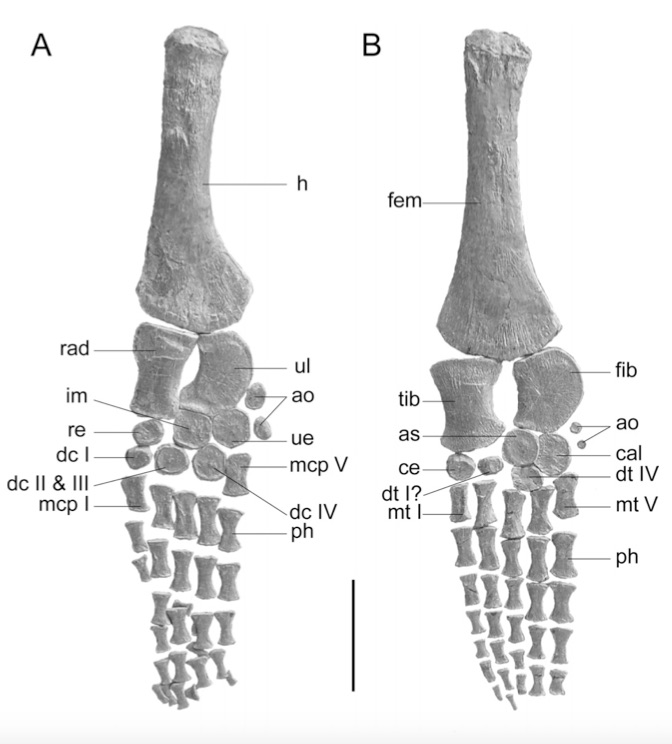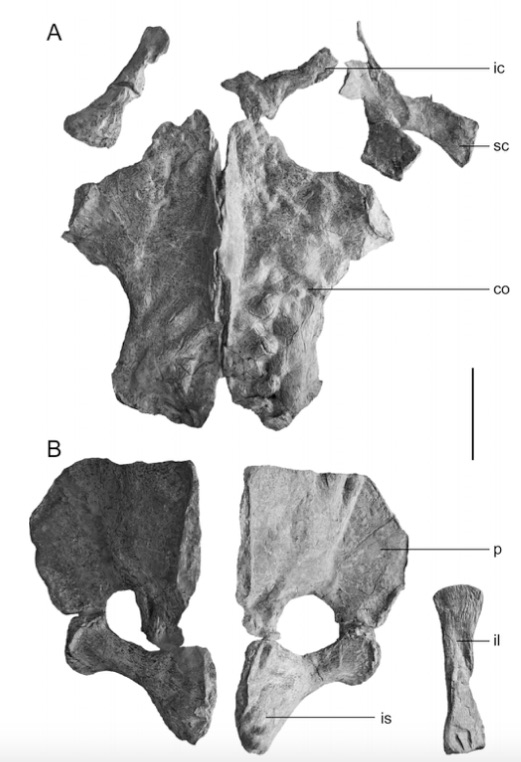Hauffiosaurus

Hauffiosaurus is a basal pliosaurid known from the Lower Jurassic (Toarcian) of the UK and Germany. Hauffiosaurus is a medium to large sized plesiosaur (H. zanoni = 3.4 m, H. tomistomimus, 4.23 m, H. longirostris = 4.83 m) (Smith and Lomax 2019), with a relatively long neck for a pliosaur, and an elongate narrow snout.
The genus Hauffiosaurus was named by O’Keefe (2001a) and contains three species, H. zanoni, H. longirostris, and H. tomistomimus.
Hauffiosaurus zanoni is the type species and type genus, represented by a single specimen (‘Hauff Uncatalogued’). This wonderful, almost complete skeleton is from the Posidonia Shale of Holzmaden, Germany. The specimen is on display in the Hauff Museum, Germany, and was first described briefly by O’Keefe (2001a) and later described in detail by Vincent (2011). The specimen has been prepared to give an artificial (and speculative) impression of the outline of the body.
The holotype of Hauffiosaurus longirostris (MCZ 1033) was considered lost (Watson 1909) until it was located in the Museum of Comparative Anatomy, Harvard University, having been acquired by them in 1931 from Tufts College, who had purchased the specimen in 1876 (Osborne 1999). The specimen was subsequently treated for pyrite disease, remounted, and described by White (1940) who referred the species (originally named Plesiosaurus longirostris) to Macroplata. However, the basis for this referral was unfounded (Ketchum and Smith 2010) and the species was later referred to Rhomaleosaurus (Benton and Taylor 1984) and eventually to Hauffiosaurus (Benson et al. 2011b).
Postcranial elements historically associated with the skull of MCZ 1033 include a sequence of vertebrae and four limbs but these may belong to separate individuals. The specimen is certainly at least partially a composite since three forelimbs are present (Blake 1876, White 1940). Nevertheless, the anatomy of the vertebrae described by White (1940) is consistent with Hauffiosaurus. The mounted postcranial material (but not the original skull) has been on long-term loan to the Houston Museum of Natural Science where it has been on display since 1961 (Osborne 1999). Benton and Taylor (1984) referred a second specimen (MANCH LL 8004) to this species, but it was later assigned to a new species of the genus (Benson et al. 2011b). H. longirostris is from the falciferum Biozone, Mulgrave Shale Member, Whitby Mudstone Formation (Benton and Taylor 1984).
H. tomistomimus is known from a single, three-dimensionally preserved, nearly complete and largely articulated skeleton (MANCH LL 8004). It was collected in 1960 from Ravenscar, just south of Robin Hood’s Bay (bifrons Biozone, Alum Shale Member, Whitby Mudstone Formation (Benson et al. 2011b). The specimen was discovered by The University of Manchester Geology Department during a field trip (Broadhurst and Duffy 1970). The specimen was originally referred to Macroplata (or Rhomaleosaurus) longirostris, but was later described in detail and referred to Hauffiosaurus by Benson et al. (2011b). MANCH LL 8004 can be seen on display in the Manchester Museum.







